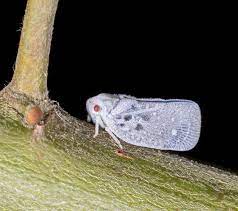If most trees and shrubs have finished flowering, the foragers can only rely on the generosity of the so-called creeping herbaceous plants, which are still numerous at this time, and, more episodically, on the producers of honeydew which are aphids and leafhoppers. It is the period of major migrations to intensive crops such as sunflower and alfalfa but also on conifers.
Gradually, with the shortening of the days and the decrease of the honey flow, the summer generations of bees will give way to the winter bees who will have to ensure the resumption of colony activity the following spring.
1. Narrow-leaved willowherb
It is also called Saint Anthony's laurel. It is a superb herbaceous plant that invades forest clearings established on fresh, well-drained soils. The flowers arranged in long clusters are pleasantly fragrant. To attract pollinators, they secrete abundant nectar. In Canada, where this plant is very widespread, beekeepers migrate en masse to harvest a honey that, according to enthusiasts, would be the champagne of honeys. In France, it is an almost non-existent product as monofloral honey but is often present in blends of mountain honey.
2. Edible buckwheat
Buckwheat is a fast-growing plant. It is cultivated where the planting of traditional cereals is problematic. It is a very melliferous plant. The honey produced by bees from buckwheat nectar is very dark brown. Its smell is quite puzzling because it really smells like "the farm." However, it is very pleasant in taste. It is a fairly strong honey, with notes of roasted cereals.
3. The white fir
One might be surprised to find the fir in the list of melliferous plants since it does not secrete nectar to attract insects. However, it can produce an abundant sweet liquid, called honeydew, through sap-sucking insects that parasitize it. The production of honeydew, which is the origin of fir honey, is due to the activity of an aphid: the green spruce aphid. It extracts the sap of the fir, then releases the excess in the form of drops that settle on the surrounding vegetation. In the Vosges, this is called honey dew. Bees collect it in quantity and produce a very dark honey, rich in minerals, poor in pollen, and with low sweetening power.

4. Metcalfa honey
Metcalfa honey is the only example of honey that does not bear the name of a plant but that of an insect producing honeydew. Originating from South America, it arrived in Italy in 1979 and from there, invaded France. The process that allows bees to produce metcalfa honey is very similar to that which is at the origin of fir honey in particular and all honeydews in general.
The metcalfa honey is a very dark product. It is often marketed under the name forest honey. It is a honey with complex aromas of dried fruits.

5. The Japanese sophora
As its specific name indicates, it is an exotic species originating from the Far East. It is called "pagoda tree" because it is planted near Buddhist temples. It is also widely used in cities as a street tree because it resists pollution well. It is often confused with the false acacia locust (from which the nectar of acacia honey comes). It is a very melliferous tree, actively visited by bees during its flowering. The numerous flowers fall quickly forming a yellowish carpet and even when fallen to the ground, they are still visited by bees.

Japanese Sophora
Source: The melliferous plants month by month by Jacques Piquée





